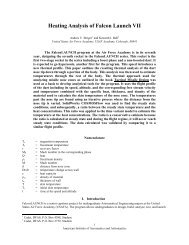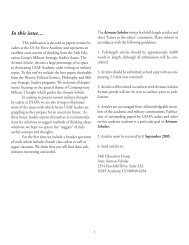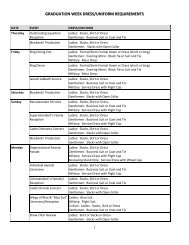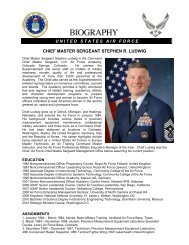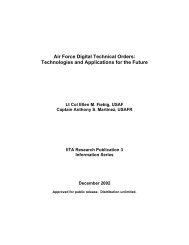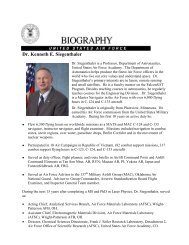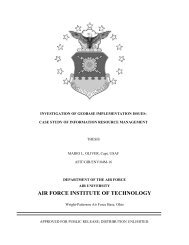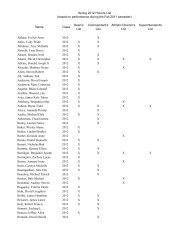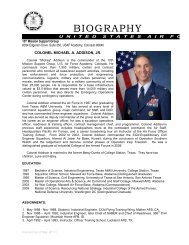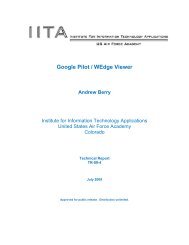the rollback of south africa's biological warfare program
the rollback of south africa's biological warfare program
the rollback of south africa's biological warfare program
Create successful ePaper yourself
Turn your PDF publications into a flip-book with our unique Google optimized e-Paper software.
investigation phase ended.<br />
Initially, TRC investigators had little information about Project Coast. A<br />
top-secret briefing to a few commission members in 1996 revealed only that<br />
South Africa had a CBW capacity in <strong>the</strong> past, but only a “defensive” one, and<br />
that it was dismantled prior to <strong>the</strong> 1994 elections. The TRC continued with<br />
low-level investigations, but had so little information at <strong>the</strong>ir disposal that it<br />
seemed unlikely that anything new would emerge. 183<br />
This expectation changed suddenly in January 1997 when Basson was<br />
arrested during a sting operation on charges <strong>of</strong> fraud and <strong>the</strong> possession <strong>of</strong><br />
illegal substances based on his alleged effort to sell 1,000 Ecstasy tablets. 184 A<br />
subsequent search <strong>of</strong> Basson’s friend and business associate, Sam Bosch’s<br />
home, uncovered five or six trunks and a couple <strong>of</strong> suitcases that contained<br />
secret documents related to Project Coast that were thought to have been<br />
destroyed when <strong>the</strong> CBW <strong>program</strong> was dismantled.<br />
The senior TRC researcher, Dr. Villa-Vicencia, rushed to Pretoria after<br />
Basson was arrested in order to represent <strong>the</strong> TRC. He was joined by Mike<br />
Kennedy, <strong>the</strong> representative <strong>of</strong> <strong>the</strong> National Intelligence Agency (NIA), and<br />
representatives from <strong>the</strong> Office <strong>of</strong> Serious Economic Activities, and <strong>the</strong><br />
Gauteng Attorney-General’s Special Investigation Team. Toge<strong>the</strong>r <strong>the</strong>y went<br />
through <strong>the</strong> contents <strong>of</strong> <strong>the</strong>se trunks. After some initial squabbling, an<br />
agreement was reached that <strong>the</strong> NIA would take control and responsibility for<br />
keeping <strong>the</strong>se documents secure. Before <strong>the</strong> documents were turned over to <strong>the</strong><br />
NIA, <strong>the</strong> contents <strong>of</strong> <strong>the</strong> trunks were inventoried. 185 These documents<br />
contained <strong>the</strong> core <strong>of</strong> information, which formed <strong>the</strong> basis <strong>of</strong> <strong>the</strong> TRC’s<br />
investigative work over <strong>the</strong> next 18 months. The TRC called in Pr<strong>of</strong>essor Peter<br />
Folb, University <strong>of</strong> Cape Town, to serve as <strong>the</strong>ir scientific and technical<br />
adviser.<br />
In March 1998, Chandre Gould, ano<strong>the</strong>r TRC investigator who had<br />
access to <strong>the</strong> documents, and <strong>the</strong> TRC’s Commissioner, Wendy Orr, looked at<br />
71




